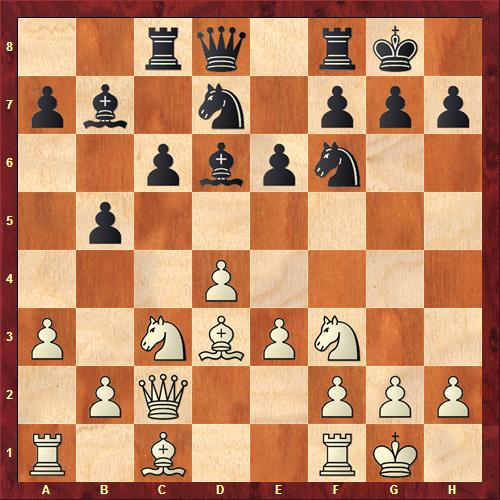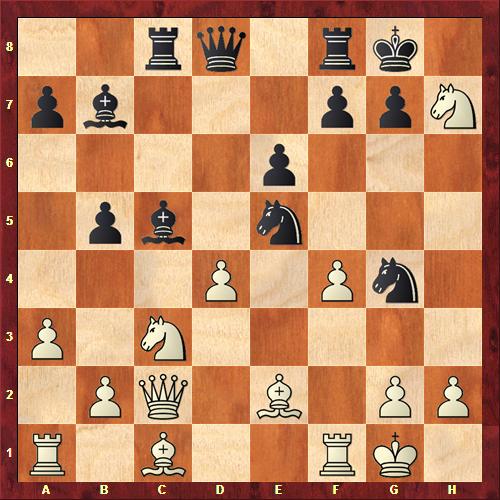Modern chess: computers shutting down opening theory, part 2
Last September, I described how a shocking chess opening novelty illustrates the subtlety of human chess preparation and the psychology of practical play.
I had no idea that an even bigger shock was to come, in the very same chess opening variation.
Critical position
This is a critical position of the Meran Variation of the Semi-Slav, White to play:

Last September, Topalov as White played the natural 12 b4, but that led to the stunning sacrifice 12...c5 that leads to a draw for Black. As I said in my blog post: “What this novelty means is that anyone playing White going into this opening variation in the future cannot play the obvious “best” move 12 b4, because it results in a draw.”
What else for White to try?
So in a recent game between Aronian and Anand (full annotated game here), Aronian deviated by playing instead 12 Ng5, sidestepping the known draw.
But amazingly, Anand, as Black played 12...c5 anyway!! It looks insane. If it’s an acceptable move, then surely Aronian must have done his own computer research ahead of time to deal with it?
No, he clearly had not seen everything coming, because after the amazing sacrifice 15...Bc5, Aronian played a poor move, which led to the astounding 15...Nde5 by Anand leading to this position:

Anand then won the game after several more moves.
It may have been his most brilliant game in his career, and will definitely be in any anthology of the greatest games ever played in the history of chess.
Quotes
Aronian said: “I think I ran into a theoretical trap. I was not aware of Bc5, which is very strong. Vishy said he had prepared it for somebody else. I should study openings better.”
Anand said: “It was the same concept [as Rotlevy-Rubinstein].”
World number one Magnus Carlsen described the game as “mind-blowing and really something special”.
Observations
First of all, note how this game shows that computers still have not meant the death of human chess: Aronian, one of the strongest and most brilliant chess players in the world, armed with all the computation power he wanted, did not analyze this line deeply enough with computer aid to see that Black could play the crazy-looking sacrifice 15...Bc5. It took human creativity, not brute-force compute power, to find this move. Of course, it took computer analysis to validate this move.
Second, this game means that the move 12 Ng5 will never again be seen in top level chess, because now we know that Black can achieve at least a draw.
Or do we? Is it possible that there is still something overlooked, an improvement for White somewhere? Actually, not really: now that the whole forcing line by Black has been revealed, it is easy for any chess player to zero in on all possibilities and evaluate all of them with computer aid. This entire opening variation starting with Black’s “threat” to play ...c5 is probably done. (Of course, if it is shown otherwise, I will have another blog post to write.)
Pattern recognition
It is probably critical to note that Anand found his brilliant concept through an analogy with the famous Rotlevy-Rubinstein sacrificial game that basically every chess player sees and learns early on: I remember first reading through that game at age seven from a library book and being totally wowed by it.
This is just a reminder that human chess players still get their edge (in certain circumstances) over brute force computer search, through pattern recognition, as de Groot verified half a century ago in his classic study of strong chess players.
Chess is not yet over.
